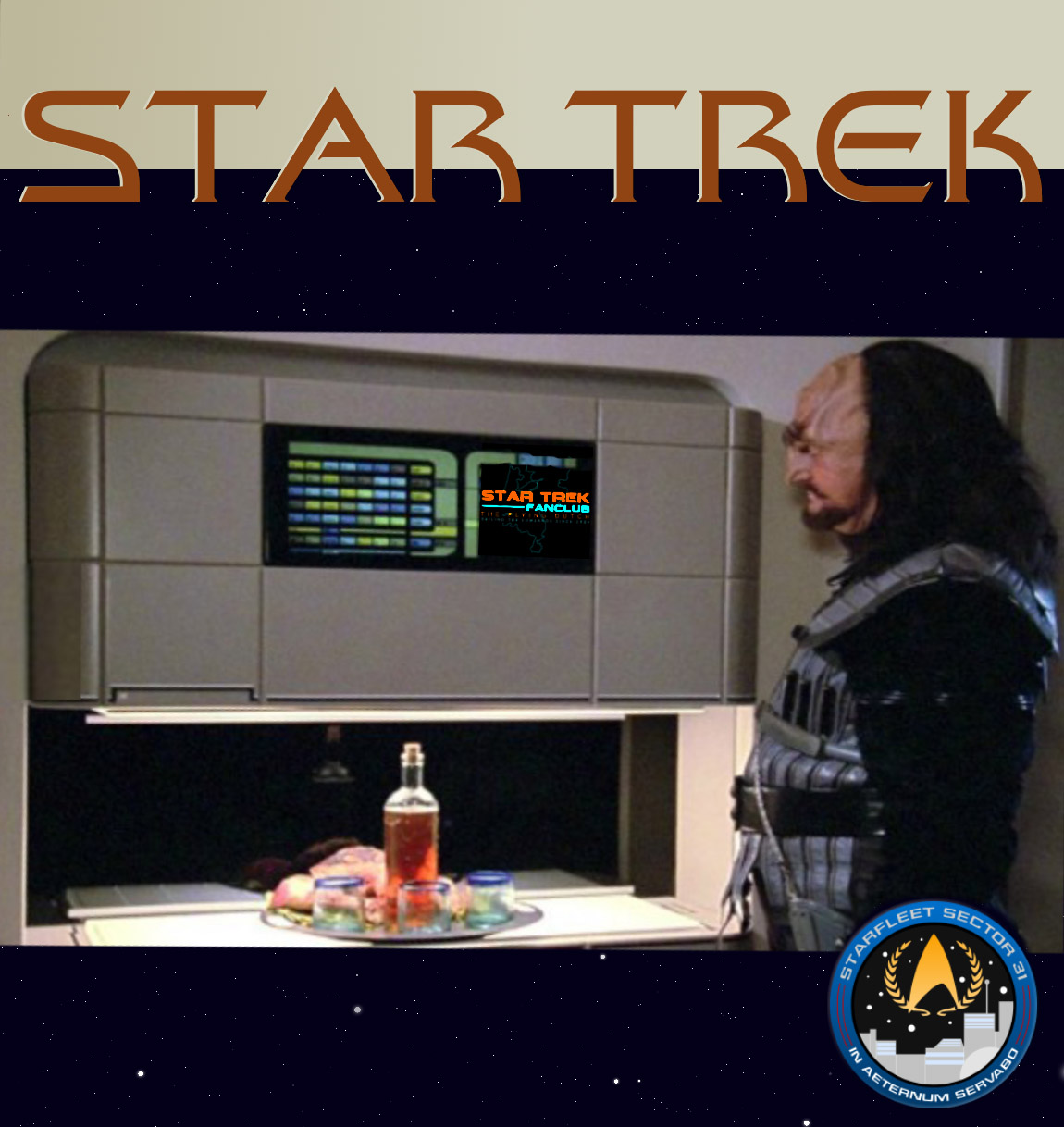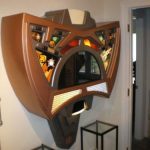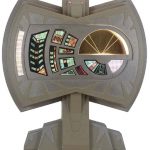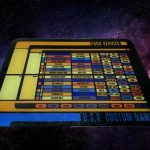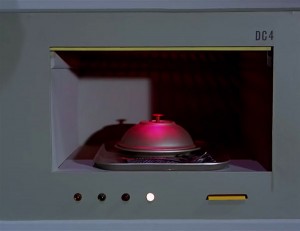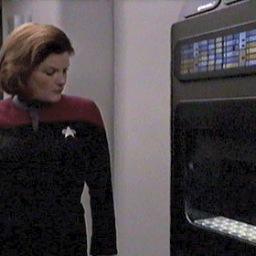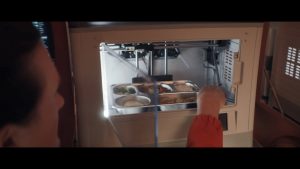Replicator Prop
What it is
The Replicator. To put it in simple terms : it is essentially an upgraded form of the transporter, derived from transporter technology to dematerialize matter and then reconstitute it in another form. Replicators can create anything by rearranging atoms, but it can’t make new matter. That’s against the laws of physics!
In use since the early 24th century replicators are most commonly used as fooddispensers aboard Federation starships. The menu is only limited by the programming, as opposed to the days of carrying natural or reconstituted foodstuffs with delivery by special turbolifts or transporters.
 Generally replicated food and “natural” food taste the same, though some people claim to be able to detect a difference. For instance, Captain Picard kept real caviar stored for special occasions since he felt replicated caviar was inferior to the real thing.
Generally replicated food and “natural” food taste the same, though some people claim to be able to detect a difference. For instance, Captain Picard kept real caviar stored for special occasions since he felt replicated caviar was inferior to the real thing.
How about the prop?
The prop seems pretty popular to fabricate. There are a number of nice examples to be found on the net. One of the most elaborate and most “life-like” is the DS9 version that was made for Quark’s on the star trek experience in Las Vegas. Or a Cardassian model sold on a auction by Christies for over 3000$. Or even this glass model, which is intended to be used as a cutting bord in the kitchen. On sale on Etsy for about 39€.
- Quark’s replicator
- Cardassian
- Cutting board
Used materials
Big or small the replicator is to be found in different shapes and models. Some are constructed of several 3D printed parts, some of painted wood printed plastic sheets, and glass panels. Prop builders are having a field day with this one.
- The Discovery replicator
- Star Trek TOS Replicator
- The replicator in VOY
- A 3D-printer replicator in Picard
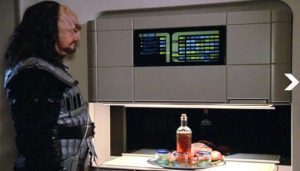 Real life replicators?
Real life replicators?
Imagine being able to generate a perfectly cooked steak and lobster dinner on a whim — without having to first track down an actual lobster or cow. Or imagine if you suddenly desired a new phone, or television, or chair, or anything else you can dream up, and you could produce one instantly, seemingly out of thin air. Needless to say, this technology would be about as close to magic as it gets. It would be a miracle machine.
Well, believe it or not, a team of scientists at the University of California, Berkeley have done it. They created a 3D printer that uses light and synthetic resin to replicate objects. First, the printer scans a real object from different angles. Then, the printer projects that image into the tube of resin, which transforms into the object. The team was able to recreate a miniature version of Rodin’s famous “The Thinker” statue. While this invention is definitely ground breaking, it can only create small objects using this specific resin. https://youtu.be/t5UsRDS-wqI
Maybe one day we really can order Earl Grey , or a Raktajino from a replimat in an Ikea somewhere.
Until that day you can always get to see a replicator prop on one of our upcoming meetings!

